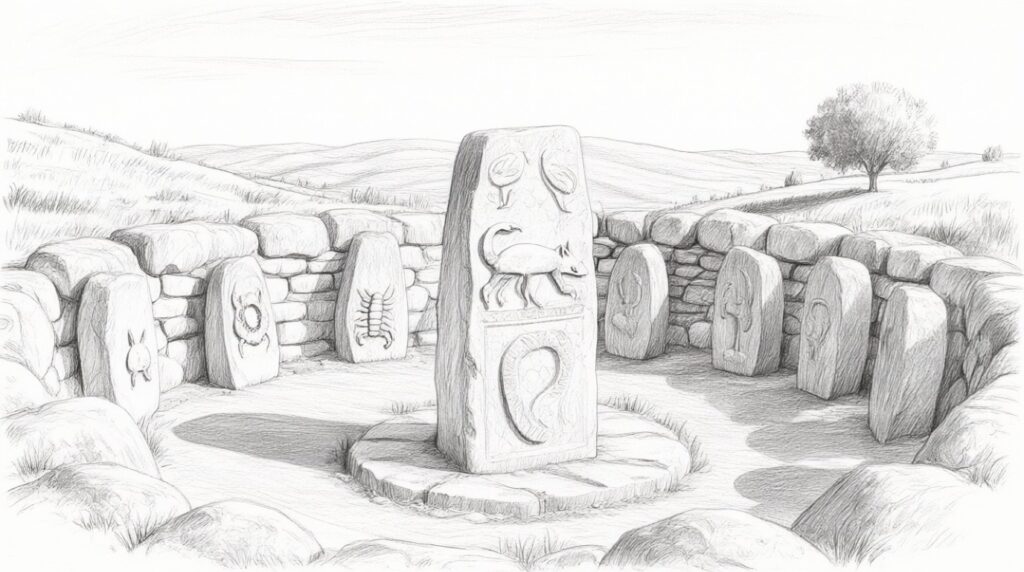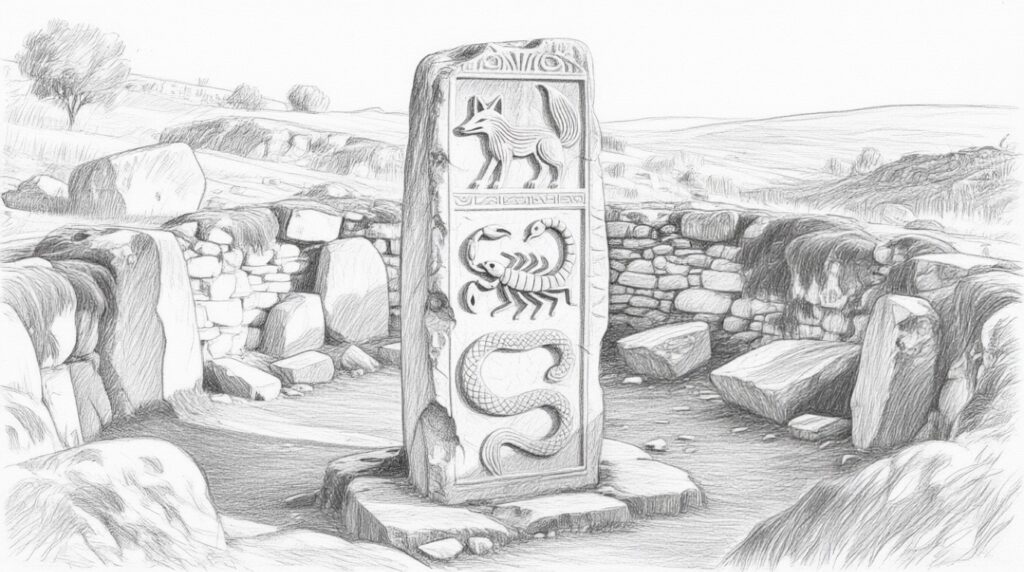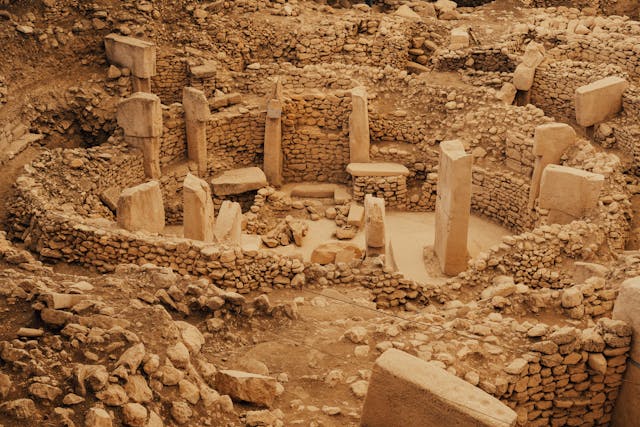Nestled in the rolling hills of southeastern Turkey lies one of humanity’s oldest and most enigmatic archaeological sites: Göbekli Tepe. Dating back over 12,000 years, this massive stone complex predates Stonehenge by 6,000 years, challenging everything we thought we knew about early human civilization. How could a society that hadn’t yet invented agriculture construct such monumental architecture? The mystery deepens with every discovery.
The Monument of Göbekli Tepe
Göbekli Tepe consists of dozens of enormous stone pillars arranged in circular enclosures, many weighing several tons. The pillars are intricately carved with animals, abstract symbols, and humanoid figures. Some suggest the carvings represent mythologies or rituals, though we may never fully understand their meaning.

Circular Stone Enclosures and Carved Pillars
The stone circles are arranged in multiple layers, with some enclosures partially buried, suggesting a construction and burial cycle spanning centuries. Each pillar tells a story through its carvings—animals like snakes, boars, lions, and vultures appear frequently.
The Mystery of Its Builders
Conventional history assumes that complex structures arose after humans settled into farming communities. Yet Göbekli Tepe was built by hunter-gatherers, long before agriculture became widespread. This has led some researchers to speculate that our ancestors were far more advanced than previously thought.
- How did they transport these massive stones without modern tools?
- What purpose did these enclosures serve—religious, astronomical, or social?
- Were they ceremonial temples, centers of knowledge, or something else entirely?
Theories and Speculations
Religious or Ritual Site
Many scholars believe Göbekli Tepe was a sacred site, where rituals were performed to honour deities or natural forces.
Ancient Observatory
Some pillars may align with celestial bodies, hinting at astronomical significance and early sky-watching practices.
Lost Knowledge Civilization
Fringe theorists propose that Göbekli Tepe hints at a pre-agricultural advanced society, now lost to history.

Why Göbekli Tepe Still Fascinates
Göbekli Tepe remains partially buried, with excavation only beginning in the 1990s. Its age, sophistication, and sheer scale continue to astonish archaeologists and historians. Every carved stone seems to whisper secrets of a civilization that existed long before cities, written language, or metallurgy.
Conclusion
Göbekli Tepe is more than a collection of ancient stones—it’s a window into humanity’s distant past, a puzzle we may never fully solve. Whether it was a sacred sanctuary, an astronomical observatory, or a hub of lost knowledge, the site reminds us that our ancestors were capable of wonders that defy explanation.
What do you think the builders of Göbekli Tepe were trying to achieve? Share your thoughts in the comments below.
